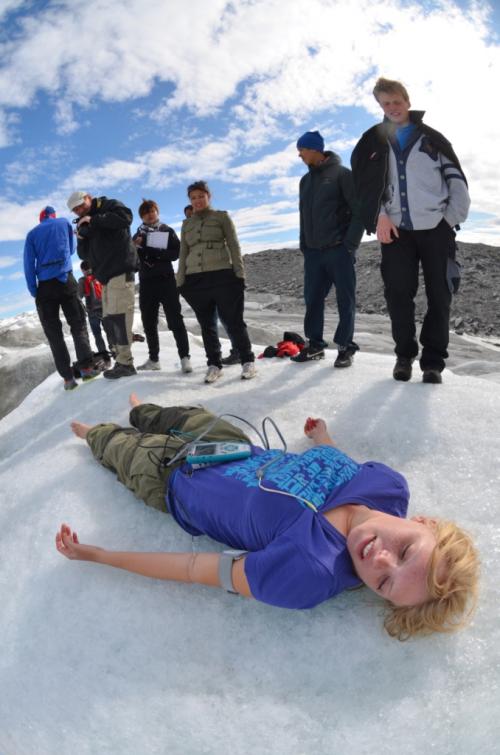In this project our main question was how the body reacts in different situations, such as hiking, biking, sleeping and sudden cooling. Our hypotheses were that there would be a difference between the Greenlandic and Caucasian subjects and that we could tell from the use of energy what the subjects were doing.
We used “Body Media” watches that measure the energy use and body temperature during both day and night. Finally during the cooling experiment we used thermometers to measure the temperatures on both the extremities and the central body (on the arm near the elbow, in the armpit).
From our result and graphs we can conclude that there is a difference between our two subject groups in how they react when they cool down. For examples the Greenlandic subjects keep their heat stored in the torso but cools down the extremities. We also noticed a difference in the subjects’ use of energy in accordance to their muscle mass. For examples a higher muscle mass means a higher use of energy.

Research questions
How much energy do we use in different situations during the day (esp. in extreme environments)?
How is our temperature changing throughout the day (esp. in extreme environments)?
What happens when you cool someone down in water or on the glacial ice?
Is there a difference in responses by Greenlandic, Danish, and American people?
Hypotheses/predictions
We use a lot of energy when hiking and biking, so our temperature should be low at those times. Greenlanders are better at keeping their body temperature high compared to Danes and Americans.
Group Members
Rebecca Skov (Denmark)
Símun Niclasen (Greenland)
Arno Jensen (Greenland)
Titte Møller (Greenland)
Methodology
We have the subjects wear arm band monitors that measure how much energy you use, temperature, how much you push yourself, when you are laying down or upright, and when you are asleep.
We are recording the time when we test activities such as hiking, biking, and cooling down. We also measure the ambient temperature in the air and water to compare.
The cooling test: We were lying down on the ice in a T-shirt and bare feet. We had a thermometer under the arm and at the elbow.



Comments